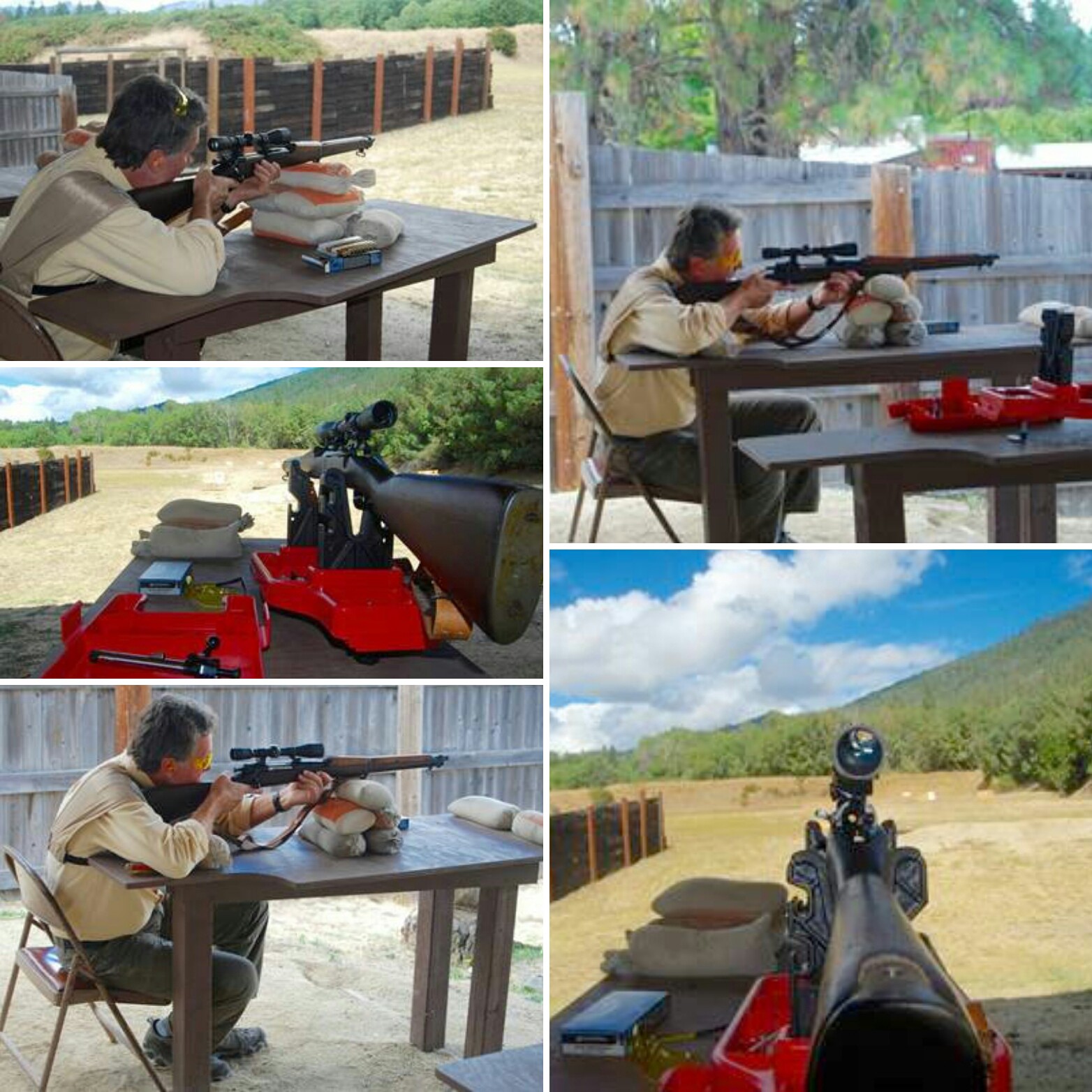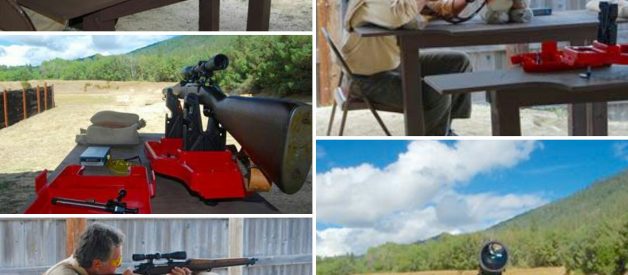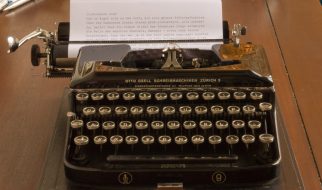by Jeff Barnard, AP environmental reporter in SW Oregon for 30+ years (now retired)
With hunting seasons approaching, I am paying more attention to my rifle: choosing a cartridge, sighting in, and practicing. This whole effort to teach myself to hunt grew out of my purchase more than 50 years ago of an Army surplus 1903 Springfield, which is sportsterized. So I will be hunting with a .30?06.
But what about the bullet? They come in a wide range of sizes. My friend and AP colleague Ben Neary in Wyoming has hunted all his life and loads his own ammunition. He suggests using a 150-grain copper bullet from Barnes, which I can buy as factory ammunition. The 150-grain bullet has a little higher muzzle velocity than the heavier bullets, so it doesn?t drop as much over distance as the 180-grain, which is a longtime popular all-around cartridge for hunting everything from deer to elk. Louis G. Terkla recommends it in his 1992 book, ?Hunting Black-Tailed Deer.?
But the modern 150-grain has plenty of power for deer, and even elk. It also produces a little less recoil than the heavier bullets, which is not bad for an old guy like me. Ben?s suggestion of the 150-grain bullet is backed up by an article I found on the National Rifleman website (https://www.americanrifleman.org/articles/2010/9/24/a-new-ruling-for-the-30-06-sprg/ ), which notes that the modern 150-grain bullets are enough for elk, and that the 180-grain bullet drops 2.82 inches more than the 150-grain at 300 yards. That is way out of anything I plan on shooting at, but there it is.
Ben suggests copper to make sure that if I shoot a deer, I will not be picking out bits of toxic lead from the meat. He adds that when he has used tipped Barnes VOR-TX bullets, they didn?t fragment. Non-lead ammunition is not required in Oregon. But California is phasing out lead ammunition statewide after banning it in areas where condors have died from eating lead-contaminated gut piles. Since most copper bullets cost more than lead, I will be practicing with lead, and doing a final sighting in with copper.
For sighting in, the late Outdoor Life shooting editor Jack O?Connor had a lot to say in books like ?The Complete Book of Shooting,? and old magazine articles you can find online (with ads for Marlin 336 rifles for $89.95). I also came across the National Shooting Sports Foundation website, which is loaded with very helpful videos, particularly on the concept of minutes of angle, which is helpful in sighting in. I won?t go into that in detail here. But here is the video.
To start, it helps to understand that a bullet coming out of the barrel of a rifle starts to fall almost immediately. So to hit your target at 100 yards, you have to aim high, creating an arc that crosses line of sight and hits a target close in, around 25 yards, and again farther out. The amount of fall from horizontal can be measured in minutes of angle and translated into inches. A minute of angle is 1/60 of a degree, and works out to about 1 inch at 100 yards, 2 inches at 200 yards, and so on. The adjustments on my scope, a Weaver K-4, are four clicks to the minute of angle, or four clicks to an inch at 100 yards, and eight clicks to an inch at 200 yards.
If you are interested in detailed performance of the cartridge you choose, you can Google up ballistics charts pretty easily. I found one that says when the .30?06 in 150-grain is sighted at zero at 200 yards, it will be 1.6 inches high at 100 yards and 7.3 inches low at 300.
O?Connor suggests starting to sight in any rifle at zero at 25 yards, then refining that at 100 yards, where it will be a couple inches high. With the .30?06 150-grain, that will put it about 3 inches high at 100 yards. At 100 yards you can sight in from zero to 3 inches high. It is a matter of personal preference. Terkla suggests sighting in the .30?06 180-grain to be 3 inches high at 100 yards. That puts it at point of sight at 225 yards, and 4 inches low at 250 yards. Ben and other websites suggest in general sighting in 2 inches high at 100 yards, which is about the same as zero at 200 yards.
Charlie Middleton is co-author of ?The Target Book,? which gives detailed data on performance of a wide range of cartridges and bullet sizes which you can rip out and take on your hunt for reference. He suggests sighting in at 26 yards for the .30?06 with a 150-grain bullet. That would put the bullet on target again at 245 yards, and up to three inches high in between.
 Sighting-in at Josephine County Sportsman Park near Grants Pass, Ore. Photos by Beth Quinn Barnard.
Sighting-in at Josephine County Sportsman Park near Grants Pass, Ore. Photos by Beth Quinn Barnard.
?For hunting purposes, if you sight in this way, you can aim right on for the first 285 yards, and the bullet won?t be any more than three inches high or three inches low, which is close enough,? says Middleton.
That?s because for hunting big game, you are aiming for a vital zone of about a 6-inch diameter, says Middleton. And as long as you hit that vital zone, you have done your job as a hunter.
Terkla offers detailed drawings of killing shots and the vital zone, which is essentially a lung shot, when the deer is at different angles, not just broadside.
Middleton suggests putting a piece of tape on your rifle stock that tells you where the bullet will hit at different distances.
The first step to getting your rifle to hit what you are aiming at is to bore-sight it. I got my gunsmith to do it, but you can do it easily enough. You can spend $15 or $20 for a laser bore-sighting tool, or you can do like Jack O?Connor did. Cut some notches in the ends of a cardboard box to hold your rifle steady, remove the bolt, and look down the barrel at a target. You can put pieces of wood under the box to raise and lower it. Then adjust the scope to the same target. Then you can be confident to at least be able to hit paper on your first shot at 25 yards, and moving out to 100 yards.
I bought a cradle that doubles for cleaning and a shooting rest.
The sources I have been consulting all suggest shooting a group of three shots from a bench rest, and adjusting the scope to the center of the group. That way if you flinch for one of them, you are not making an adjustment based on bad information. If you want to be at zero at 100 yards, and the group is two inches high, and two inches right, you move the crosshairs up and over to the center of the group. On my scope that would be eight clicks, and opposite the direction for UP shown by the U on the clicker. That?s because the clicker is marked to show you the direction the bullet will move, not the crosshair. The same goes for right and left. Fire another group. You should be pretty close. Fire more groups if you want to zero in more, but .30?06 cartridges are about a buck apiece.
If you want help, rifle ranges around the state are offering sighting in clinics in preparation for general rifle season. (ODFW has a list of ranges and dates at its Hunting Resources page at http://www.dfw.state.or.us/resources/hunting/hot_topics/2016_site_in_dates.asp )
As for practice, fly fishing taught me you can never do too much of it. To save on ammunition, I practice trigger pull and shooting positions ? prone, sitting, kneeling and offhand ? without firing real ammunition. O?Conner offers good descriptions of shooting positions. There are also many online sources, like this one. http://www.petersenshunting.com/tips-tactics/basic-shooting-positions-every-hunter-should-master/ And using a sling helps a lot with stability. Most centerfire rifles can take some dry firing without damage, but to be safe I have bought some snapcaps, which are dummy rounds that absorb the impact of the firing pin.
Also, if you have a .22, you can practice much more cheaply with live ammunition. There is no big kick and bang to feed your flinch, but your form still has to be good to hit your target.
I still don?t know what will happen if I get a shot at a buck. That is what this exercise is all about.


